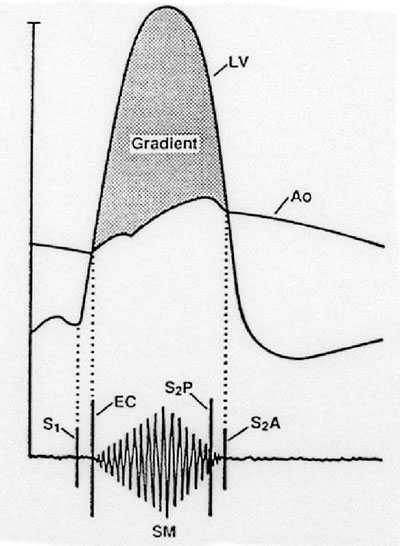
Aortic Stenosis
The diagram represents the pressure relationship in a patient with significant aortic valve stenosis. The narrowing of the aortic valve requires a marked increase in systolic pressure within the left ventricle (LV) to drive blood through the stenotic valve orifice.
When stenosis is severe, the aortic pulse curve is classically deformed; the aortic pressure pulse is narrow; and there is a slow rise during systole, with notching on the upstroke (the anacrotic notch). This pulse is referred to as pulsus parvus (small) and pulsus tardus (late).

The pressure difference between the left ventricle and the central aorta during ejection is a direct consequence of aortic valve narrowing. This gradient is small at the beginning of ejection, rises to a peak, and then falls in late ejection.
The murmur of aortic stenosis is the auscultatory concomitant of this gradient and reflects the noise heard because of the turbulence of high-velocity flow through the stenosed valve. Accordingly, the murmur will have a diamond or kite shape and is referred to as a crescendo-decrescendo murmur. The murmur is harsh and rough and is frequently accompanied by a thrill. This murmur is best heard on the right side, over the second intercostal space. Along with its thrill, the murmur radiates into the base of the neck (especially on the right), along the clavicle to the tip of the shoulder.
Return to Heart Sounds Podcast Series
Updated March 2009